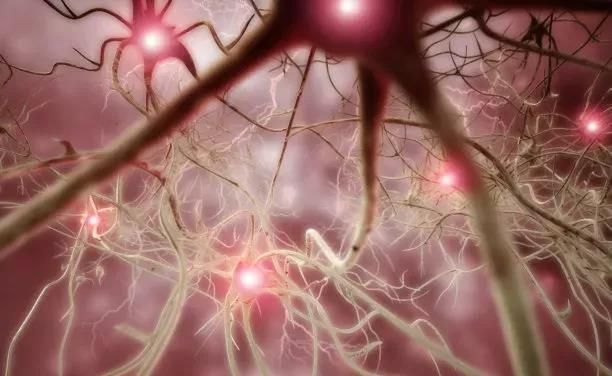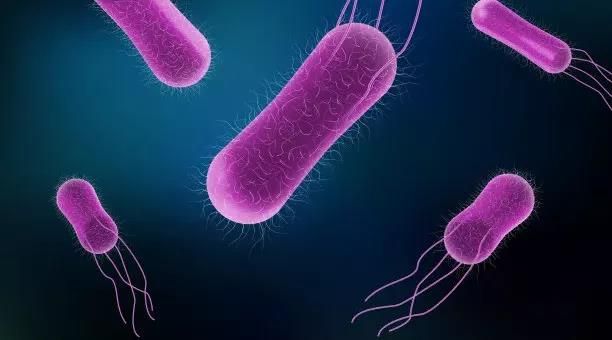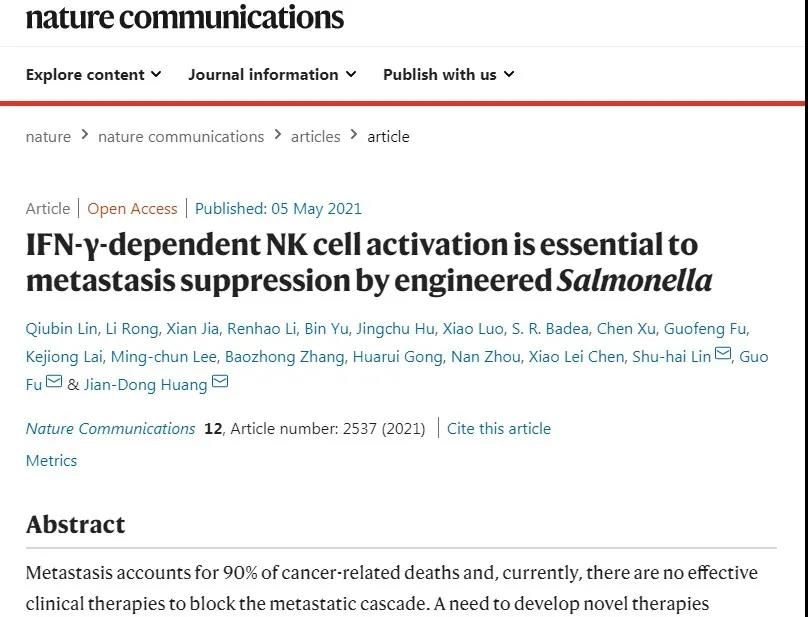
123
Synthetic biology 'reinvents' bacterial therapies, YB1 lysing bacteria open up a spring in cancer immunotherapy.
The global market for oncology drugs has shown strong growth in recent years. Cancer treatment has become a "hot spot" in the biopharmaceutical industry, with global capital concerns and research enthusiasm from biotech companies focused on developing and applying innovative cancer treatments.
As immunotherapy continues to establish itself as one of the dominant paradigms for developing cancer treatments, several promising immunotherapy segments have emerged in recent years. Among them, unprecedented breakthroughs in tumour-specific bacterial therapies, driven by the rapid development of synthetic biology, are expected to usher in a new spring in the cancer treatment field.
Contrary to popular belief, clinical use of bacteriotherapy predates the development of classical oncological treatments such as radiotherapy and chemotherapy, have been first reported in 1868.
Although bacteria possess natural tumour-targeting, invasive and cytotoxic capabilities and are diverse and malleable, their development and application as oncology therapeutics have been limited by their unclear mechanism of action, weak controllability and poor safety profile.
In recent years, the rise of synthetic biology has given new hope to tumour bacterial therapies and brought them back into the limelight, with research advances such as oncolytic bacteria causing quite a stir in the industry.
The evolution of bacteriotherapy: from Colletotoxin to lysing bacterial immunotherapy
Publicly available statistics show that the number of new cancer cases has been rising globally and in China. Cancer, a disease with a very high mortality rate, has been an enormous threat to human health from the past to the present and for the foreseeable future.
The infinite replication capacity, continuous angiogenesis and immune tolerance of tumour cells have made clinical cancer treatment difficult and have made the world fearful of cancer.
The concept of using bacteria to treat cancer has existed for an extended period of time, and bacteriotherapy has been developed for more than 150 years. From the earliest days of natural bacteria inhibiting tumour growth to genetically engineered bacteria expressing a variety of active anti-tumour molecules, research in oncology bacteriotherapy has played an essential role in cancer treatment, but it still suffers from the contradiction between therapeutic efficacy and bacterial toxicity in vivo, as well as weak spatial and temporal control of anti-tumour effects.

In the early 19th century, the American surgeon Coley put out fires with Streptococcus pyogenes and Serratia marcescens to create the famous bacterial preparation Coley's Toxin. While the experiments demonstrated remarkable efficacy, the application of Coley's Toxin was plagued by individual variability and low reproducibility, severely impeding its development into a standard. Individual variability and low reproducibility have also hampered Coeliotoxin's development as a conventional oncological therapy.
With the gradual rise of radiotherapy and chemotherapy, which have demonstrated relatively efficient tumour-killing capabilities, there has been less focus on bacteriotherapy, which has thus entered a period of silence.
Only in 1999, an analysis of the effectiveness of the Colitoxin treatment revealed that it was as effective as radiotherapy, chemotherapy, and surgery.
In 2012, industry research reported that the mechanism of action of Coeliotoxin is actually to reawaken the host's immune system to suppress tumour cells, which has renewed the interest of researchers in Coeliotoxin.
On the other hand, researchers have not limited themselves to treating tumours with inactivated bacteria alone. In contrast to inactivated bacteria, live bacteria have the unique ability to target and specifically colonise tumours actively and can target most tumour types, including metastases.
Numerous bacteria have been identified as tumor growth inhibitors or immunostimulants in studies involving the use of bacteria in oncology, including Clostridium tetani, Clostridium butyricum, Salmonella cholerae, Vibrio cholerae, Listeria monocytogenes, and other non-pathogenic bacteria such as Escherichia coli, Lactobacillus acidophilus, Lactobacillus plantarum, Bifidobacter
Synthetic biology has engineered reconfiguration of bacteria has revitalised oncobacterial therapies. Synthetic complex, multifunctional genetic circuits can bridge the gaps in traditional bacterial therapies, providing a more effective and safer therapeutic strategy for oncobacterial therapies, giving bacteria the promise of becoming another great tool in the human fight against cancer.
In 2011, the R&D team of HK Pharma Lysozyme Biopharmaceuticals achieved the first efficient programming technology of Salmonella Lambda-RED in their research, establishing the basis of synthetic biology modification of Salmonella. YB1 is the world's first lytic bacterial vector product, and the creation of YB1 means that the development of bacterial therapy has come to a new era of immunotherapy with lytic bacteria.
Synthetic biology modified vector for Salmonella strains - YB1
As research into the intra-tumour microenvironment progresses, it is understood that tumour growth is dependent on a complex network of vasculature for nutrients. In the complex distribution of vasculature within tumours, blood flow is poor due to the tortuous shape of the vessels, resulting in a central anaerobic zone of hypoxia in the internal environment.
Therefore, oxygen concentration can be one of the essential signals for bacteria to perceive the tumour microenvironment. Particulate or specialized anaerobic bacteria exhibit a high tumour colonisation capacity, circumvent the risk of escape of aerobic bacteria and are natural tumour targeting vectors; however, non-pathogenic specialized anaerobic bacteria, represented by Bifidobacterium, can successfully target tumours without direct tumourolytic effects. Parthenogenic anaerobic pathogens such as Salmonella typhimurium and Clostridium perfringens are naturally too virulent.

It is thus clear that tumour targeting and therapeutic safety of bacteria often cannot be achieved at the same time, and researchers need to target anti-tumour bacteria for further modification.
As the core technology product of the company, YB1 is a synthetic biology modified Salmonella with powerful tumour targeting and drug-carrying ability, which can efficiently deliver antibodies, mRNA, protein drugs, etc. It can be used as a "biological missile" to precisely target the hypoxic region of tumours, replicate and amplify in large quantities inside tumours, significantly The YB1 vector can increase the concentration of YB1 at the target site of solid tumours and release a variety of therapeutic "warhead" drugs, which can inhibit tumour growth and cause tumour lysis, as well as eliminate tumour metastasis, with great potential for clinical application.
YB1 tumourolytic bacterial therapy: an essential achievement in the treatment of tumours with synthetic bacteria
Over the past few decades, there has been a gradual increase in the number of reports on antibacterial therapies. Although some live attenuated bacteria have been shown to selectively accumulate, replicate and destroy tumours in rodent tumours, killing cancer cells in vitro or in vivo. Potential antibiotic resistance or reversal of mutations in the attenuated phenotype of bacteria may pose a threat to patient health as the mechanisms of interaction between the therapeutic effects of antibacterial therapies and the in vivo toxicity of bacteria are not known.
Therefore, the development of a broader range of safer bacterial therapeutic options for oncology has become an important development in oncology treatment by more profound modification and optimisation of the original chassis microorganisms. The development of synthetic biology provides the theoretical basis and technical support for the deep optimization of bacterial therapies, and the principle of action of YB1 is based on this.
In May 2021, the company's R&D team published a research paper entitled "IFN-γ-dependent NK cell activation is essential for the metastasis inhibition of engineered Salmonella" in Nature Communications. A sub journal of Nature, describing the mechanism of action of the company's core technology product, YB1, a tumour-lysing bacterium.

In this mechanistic paper on the tumour-lysing bacterium YB1, our research team explains that the immune mechanism by which the bacterium is able to suppress tumour metastasis may be due to the innate and adaptive immune response induced by YB1 infection.
The team's research paper shows that genetically programmed Salmonella YB1 is able to effectively inhibit the metastasis of a wide range of cancers through a mechanism that utilises IFN-γ and NK cells.
IFN-γ (y interferon) has antiviral, antitumour and immunomodulatory effects, regulating the expression levels of 30 genes and generating a variety of cellular responses; NK cells (natural killer cells), on the other hand, are critical immune cells in the body, not only associated with antitumour, antiviral infection and immunomodulation but also involved in hypersensitivity reactions and the development of autoimmune diseases in some cases, capable of recognising target cells They are able to recognise target cells and kill mediators.
It was found that IFN-γ is mainly produced by NK cells during early Salmonella infection. In turn, IFN-γ promotes the accumulation, activation and cytotoxicity of NK cells to kill metastatic cancer cells to achieve anti-tumour metastatic effects.
The paper points out that the absence of IFN-γ would significantly weaken the anti-metastatic ability of YB1, while the complete depletion of NK cells in vivo would also eliminate the anti-metastatic ability of YB1, thus comprehensively elucidating the mechanism of YB1's anti-tumour metastasis, which is an essential guide for the future clinical application of lysing bacteria.
Looking back over the past century, bacteriological therapies have gone from being frequently restricted in the days of Coley to being on the rise today, aided by the development of synthetic biology. With the introduction of YB1 lytic bacterial immunotherapy, it is hoped that the global cancer treatment field will see new gains in this new era.
喜欢我的文章吗?
别忘了给点支持与赞赏,让我知道创作的路上有你陪伴。
发布评论…